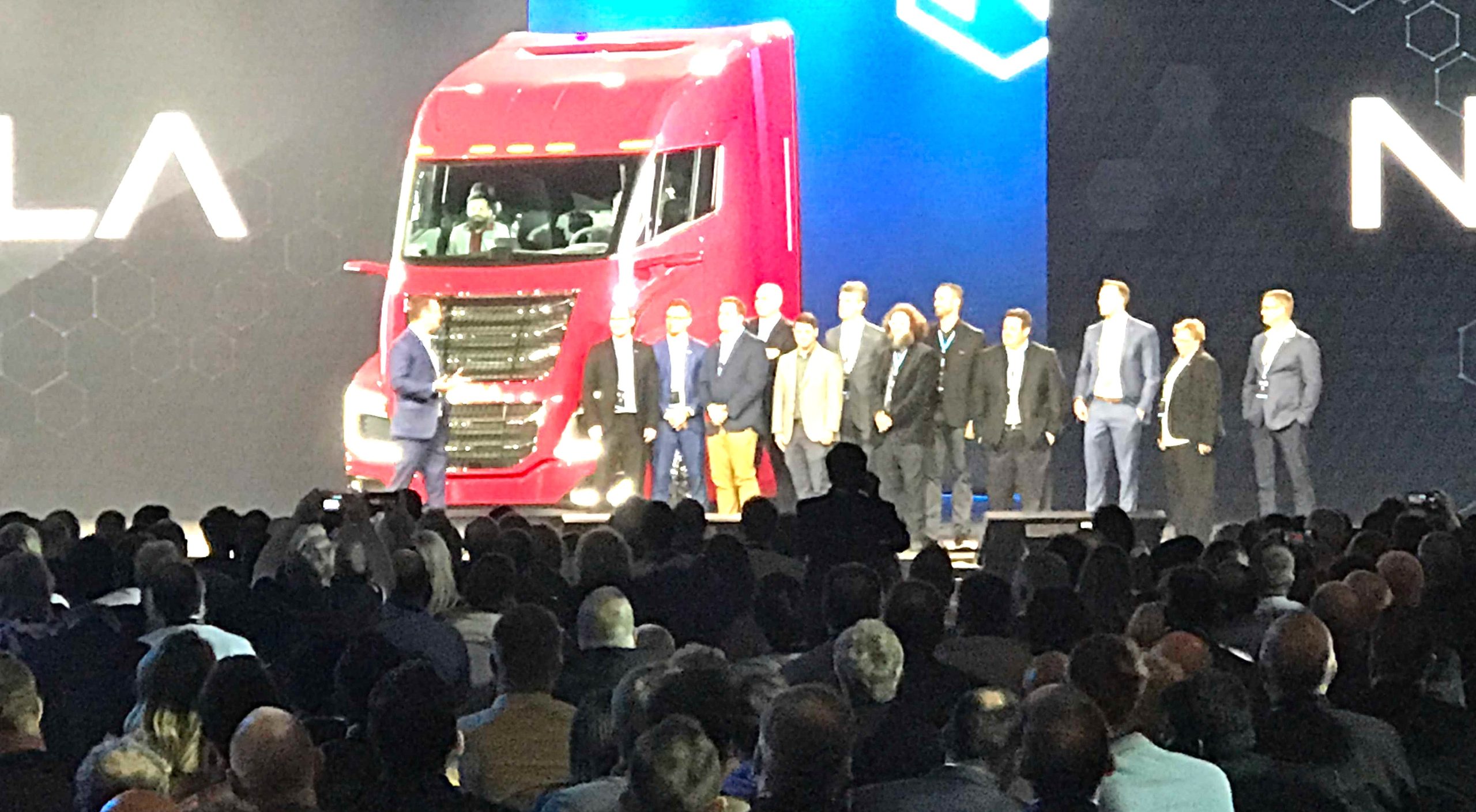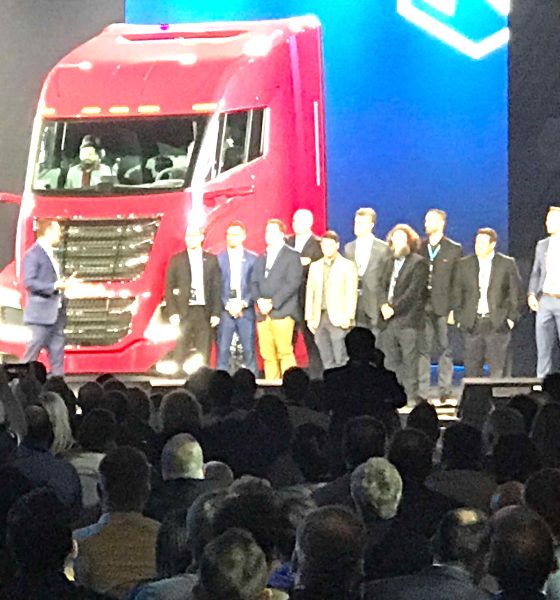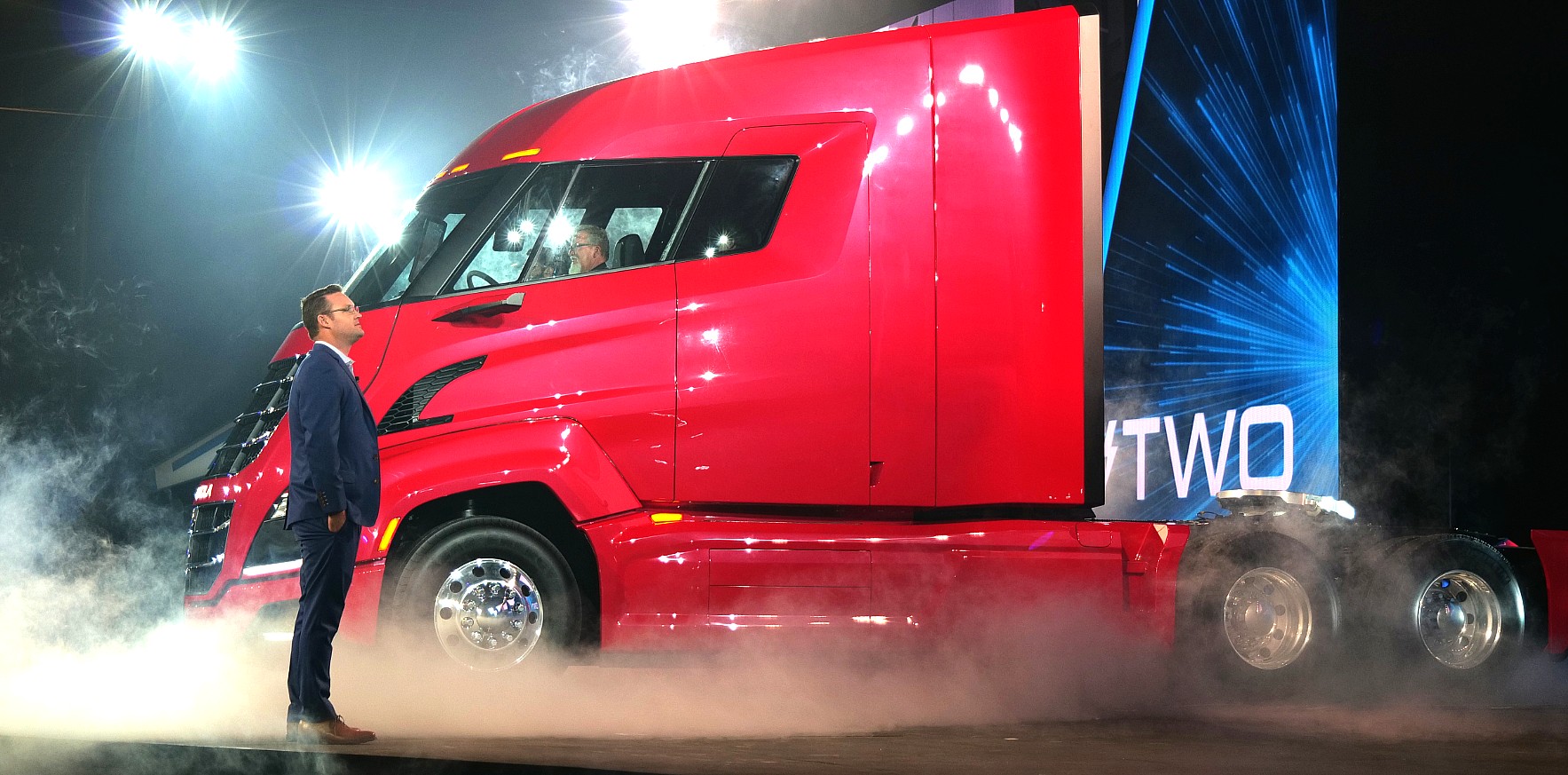

News
A Timeline of Nikola’s Trevor Milton: From Fictional to Fraudulent
Earlier today, it was announced that former Nikola Motor CEO Trevor Milton had been indicted on three counts of fraud by U.S. prosecutors and the Securities and Exchange Commission (SEC) following comments and claims he made regarding the automaker he used to run. Through the years, Milton has gone from fictional to fraudulent, never bringing a truly functional product to the market or to demonstrations for that matter, and allegedly lying to investors along the way.
Established in 2014 by Milton, Nikola worked toward revolutionary new battery-electric and hydrogen fuel cell automotive powertrains for commercial and passenger vehicles. The beginning of the company’s somewhat inevitable fall was marked by the release of a shocking report from Hindenburg Research that claimed the company’s first vehicle demonstration of the Nikola One semi-truck was misleading, claiming the vehicle was not self-propelled. Nikola initially denied this but then admitted the vehicle was placed on a low-grade hill to appear to be functional. The company was not willing to put any more money into a prototype.
(Photo: Isaac Sloan/Nikola Motor)
However, Nikola’s long journey, which has culminated in the arrest of Milton with charges to be formally announced later today, started long before Hindenburg’s report.
- 2009 – Trevor Milton launches dHybrid after selling an alarm sales company for $300,000. dHybrid entered a contract with Swift, a major transportation company in the heavy trucking sector. Swift agreed to convert up to 800 trucks, securing a $16 million contract for dHybrid shortly after its establishment.
- Swift would later sue dHybrid, claiming the company’s truck did not work and some company executives “misappropriated capital for personal use,” according to the Hindenburg report.
- Hindenburg also claims that Milton reached out to dHybrid investors, claiming the contract with Swift was valued at $250 million – $300 million.
- 2014 – dHybrid acquired by Worthington for $15.9 million.
- 2016 – Nikola announces it will unveil the Nikola One electric semi, claiming that it will be fully functional at the December 1st event. Nikola claimed to have “The Holy Grail” of hydrogen tech for trucking just months before the event.
- 2017 – Nikola signs a deal with Powercell AB, a Swedish company, to supply hydrogen fuel cell stacks. Nikola also signed with Bosch, who agreed to help assist in the production of Nikola Two prototypes.
- 2018 – Nikola begins to market the Nikola One as the “largest energy consumer” in America. Targeting the Tesla Semi, Nikola filed a $2 billion lawsuit against Tesla, alleging that Tesla violated a design patent of the Nikola One. Several elements, including the wraparound windshield, mid-entry door, front fenders, and the electric truck’s aerodynamic body, were all claimed by Nikola to be taken by Tesla.
- Nikola said in November that it had refunded all 11,550 deposits for its vehicles. It did this to show that it was not operating on customer’s money
- 2019 – Nikola World event shows five zero-emission vehicles that will eventually produce and release. The company announced a partnership with Anheuser-Busch, who ordered 800 trucks from Nikola.
- Nikola offers Tesla a new design for its Cybertruck. Milton extends the pickup truck design to Tesla CEO Elon Musk, giving it to him as a “backup plan” if Cybertruck pre-orders were unsuccessful. Tesla has received over 1 million pre-orders for the Cybertruck since November 2019.
- 2020 – Nikola and GM come to a partnership to see GM handle fuel cell and battery systems in early September. The deal gives GM a $2 billion equity stake.
- Hindenburg releases its report on Nikola called, “Nikola — How to Parlay an Ocean of Lies into a Partnership with the Largest Auto OEM in America.” The report claims Nikola is “an intricate fraud” by gathering phone calls, emails, text messages, photographs, and other pieces of evidence that claim the company has been misleading shareholders. Hindenburg claims they’ve “never seen this level deception at a public company, especially of this size.”
- Nikola admits that the Nikola One was not self-propelled.
- Nikola CEO Trevor Milton steps down from his post at the helm of the company. “Nikola is truly in my blood and always will be, and the focus should be on the Company and its world-changing mission, not me,” Milton said. Stephen Girsky became the new Chairman of the Board.
- Nikola plans the next “Nikola World” event, but it is postponed as uncertainty due to its lack of executive leadership continues.
- GM reconsiders its partnership and eventually cuts back the terms of its conglomeration. NKLA stock falls 24% as GM partially backs out of the deal.
- 2021 – Nikola files a 10-K filing with the SEC following its Q4 2020 Earnings Report and admits its former frontman Milton misled shareholders by lying. The company said that several statements made by Milton were “inaccurate in whole or in part when made.”
- Today, July 29th – Trevor Milton surrenders to federal authorities on three counts of fraud for lying about “nearly all aspects” of Nikola’s business. Milton is required to forfeit all properties that are traceable to the commission of his offenses.
Milton will be presented by the U.S. Attorney’s Office for the Southern District of New York at 11 am EST today.
*LIVE EVENT*
There will be a press conference today at 11:00 a.m. to announce charges against Trevor Milton, the founder of Nikola Corporation and one-time executive chairman of the company. livestreamed on Facebook @USAOSDNY. pic.twitter.com/RPFuuUcuXq
— US Attorney SDNY (@SDNYnews) July 29, 2021

Elon Musk
Elon Musk and Tesla AI Director share insights after empty driver seat Robotaxi rides
The executives’ unoccupied tests hint at the rapid progress of Tesla’s unsupervised Robotaxi efforts.

Tesla CEO Elon Musk and AI Director Ashok Elluswamy celebrated Christmas Eve by sharing personal experiences with Robotaxi vehicles that had no safety monitor or occupant in the driver’s seat. Musk described the system’s “perfect driving” around Austin, while Elluswamy posted video from the back seat, calling it “an amazing experience.”
The executives’ unoccupied tests hint at the rapid progress of Tesla’s unsupervised Robotaxi efforts.
Elon and Ashok’s firsthand Robotaxi insights
Prior to Musk and the Tesla AI Director’s posts, sightings of unmanned Teslas navigating public roads were widely shared on social media. One such vehicle was spotted in Austin, Texas, which Elon Musk acknowleged by stating that “Testing is underway with no occupants in the car.”
Based on his Christmas Eve post, Musk seemed to have tested an unmanned Tesla himself. “A Tesla with no safety monitor in the car and me sitting in the passenger seat took me all around Austin on Sunday with perfect driving,” Musk wrote in his post.
Elluswamy responded with a 2-minute video showing himself in the rear of an unmanned Tesla. The video featured the vehicle’s empty front seats, as well as its smooth handling through real-world traffic. He captioned his video with the words, “It’s an amazing experience!”
Towards Unsupervised operations
During an xAI Hackathon earlier this month, Elon Musk mentioned that Tesla owed be removing Safety Monitors from its Robotaxis in Austin in just three weeks. “Unsupervised is pretty much solved at this point. So there will be Tesla Robotaxis operating in Austin with no one in them. Not even anyone in the passenger seat in about three weeks,” he said. Musk echoed similar estimates at the 2025 Annual Shareholder Meeting and the Q3 2025 earnings call.
Considering the insights that were posted Musk and Elluswamy, it does appear that Tesla is working hard towards operating its Robotaxis with no safety monitors. This is quite impressive considering that the service was launched just earlier this year.
Elon Musk
Starlink passes 9 million active customers just weeks after hitting 8 million
The milestone highlights the accelerating growth of Starlink, which has now been adding over 20,000 new users per day.

SpaceX’s Starlink satellite internet service has continued its rapid global expansion, surpassing 9 million active customers just weeks after crossing the 8 million mark.
The milestone highlights the accelerating growth of Starlink, which has now been adding over 20,000 new users per day.
9 million customers
In a post on X, SpaceX stated that Starlink now serves over 9 million active users across 155 countries, territories, and markets. The company reached 8 million customers in early November, meaning it added roughly 1 million subscribers in under seven weeks, or about 21,275 new users on average per day.
“Starlink is connecting more than 9M active customers with high-speed internet across 155 countries, territories, and many other markets,” Starlink wrote in a post on its official X account. SpaceX President Gwynne Shotwell also celebrated the milestone on X. “A huge thank you to all of our customers and congrats to the Starlink team for such an incredible product,” she wrote.
That growth rate reflects both rising demand for broadband in underserved regions and Starlink’s expanding satellite constellation, which now includes more than 9,000 low-Earth-orbit satellites designed to deliver high-speed, low-latency internet worldwide.
Starlink’s momentum
Starlink’s momentum has been building up. SpaceX reported 4.6 million Starlink customers in December 2024, followed by 7 million by August 2025, and 8 million customers in November. Independent data also suggests Starlink usage is rising sharply, with Cloudflare reporting that global web traffic from Starlink users more than doubled in 2025, as noted in an Insider report.
Starlink’s momentum is increasingly tied to SpaceX’s broader financial outlook. Elon Musk has said the satellite network is “by far” the company’s largest revenue driver, and reports suggest SpaceX may be positioning itself for an initial public offering as soon as next year, with valuations estimated as high as $1.5 trillion. Musk has also suggested in the past that Starlink could have its own IPO in the future.
News
NVIDIA Director of Robotics: Tesla FSD v14 is the first AI to pass the “Physical Turing Test”
After testing FSD v14, Fan stated that his experience with FSD felt magical at first, but it soon started to feel like a routine.

NVIDIA Director of Robotics Jim Fan has praised Tesla’s Full Self-Driving (Supervised) v14 as the first AI to pass what he described as a “Physical Turing Test.”
After testing FSD v14, Fan stated that his experience with FSD felt magical at first, but it soon started to feel like a routine. And just like smartphones today, removing it now would “actively hurt.”
Jim Fan’s hands-on FSD v14 impressions
Fan, a leading researcher in embodied AI who is currently solving Physical AI at NVIDIA and spearheading the company’s Project GR00T initiative, noted that he actually was late to the Tesla game. He was, however, one of the first to try out FSD v14.
“I was very late to own a Tesla but among the earliest to try out FSD v14. It’s perhaps the first time I experience an AI that passes the Physical Turing Test: after a long day at work, you press a button, lay back, and couldn’t tell if a neural net or a human drove you home,” Fan wrote in a post on X.
Fan added: “Despite knowing exactly how robot learning works, I still find it magical watching the steering wheel turn by itself. First it feels surreal, next it becomes routine. Then, like the smartphone, taking it away actively hurts. This is how humanity gets rewired and glued to god-like technologies.”
The Physical Turing Test
The original Turing Test was conceived by Alan Turing in 1950, and it was aimed at determining if a machine could exhibit behavior that is equivalent to or indistinguishable from a human. By focusing on text-based conversations, the original Turing Test set a high bar for natural language processing and machine learning.
This test has been passed by today’s large language models. However, the capability to converse in a humanlike manner is a completely different challenge from performing real-world problem-solving or physical interactions. Thus, Fan introduced the Physical Turing Test, which challenges AI systems to demonstrate intelligence through physical actions.
Based on Fan’s comments, Tesla has demonstrated these intelligent physical actions with FSD v14. Elon Musk agreed with the NVIDIA executive, stating in a post on X that with FSD v14, “you can sense the sentience maturing.” Musk also praised Tesla AI, calling it the best “real-world AI” today.








